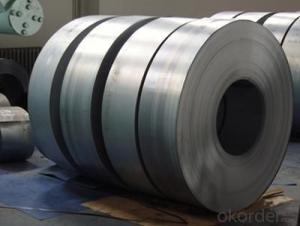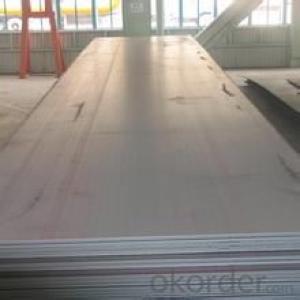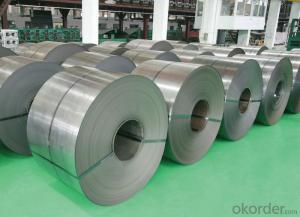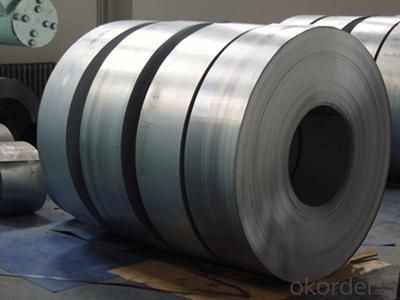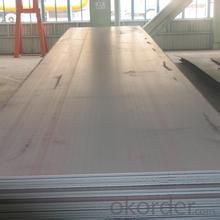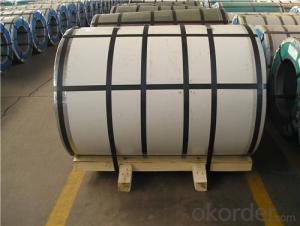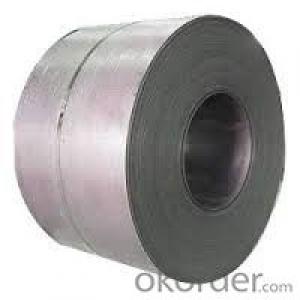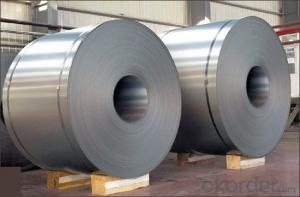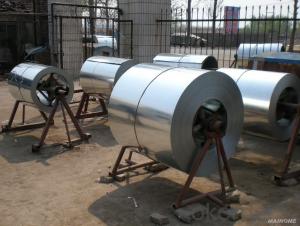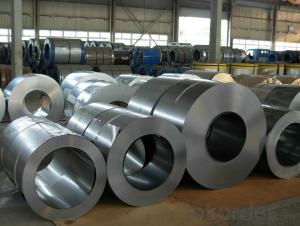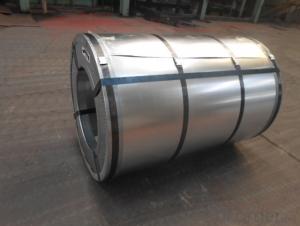acid pickling steel coil
- Loading Port:
- China Main Port
- Payment Terms:
- TT OR LC
- Min Order Qty:
- -
- Supply Capability:
- -
OKorder Service Pledge
Quality Product, Order Online Tracking, Timely Delivery
OKorder Financial Service
Credit Rating, Credit Services, Credit Purchasing
You Might Also Like
Quick Details
| Standard: | Grade: | Thickness: | |||
| Place of Origin: | Brand Name: | Model Number: | |||
| Type: | Technique: | Surface Treatment: | |||
| Application: | Special Use: | Width: | |||
| Length: | Certificate: | Surface: | |||
| Name: | Technique of production: | Coil Weight: | |||
| Inside Diameter: | Outside Diameter: | Delivery Detail: | |||
| Productivity: |
Packaging & Delivery
| Packaging Detail: | Export standard package or as request for hot rolled pickled steel coils |
| Delivery Detail: | 15-60 days for hot rolled pickled steel coils |
Specifications
hot rolled pickled steel coils
1) Quick delivery
2) High quality and good price
3) Stock&Production
- Q: What are the different steel coil surface treatments?
- The different steel coil surface treatments include mill finish, galvanized, galvannealed, painted, and coated with various materials such as zinc, aluminum, or polymer.
- Q: If steel content is too cheap, what content should I be looking for? I don't think I could find something like a VG-10 here...
- Confusion Sucks. Why are you going into all this crap over the content of steel in the knives, your only confusing yourself. I recommend you go to a chef's supply or a good store that sells chef's utensil's and knows what he is talking about, and look at something that is comfortable for you. Chris
- Q: What are the common coil weights available for steel coils?
- The common coil weights available for steel coils vary depending on the specific application and industry requirements. However, there are a few standard coil weights that are commonly available in the market. These include: 1. Light coils: Light coils typically have a weight range of 3 to 6 metric tons (6,000 to 13,000 pounds). These coils are commonly used in industries such as automotive, construction, and appliance manufacturing, where smaller, more manageable coil sizes are preferred. 2. Medium coils: Medium coils generally range in weight from 6 to 15 metric tons (13,000 to 33,000 pounds). These coils are utilized in a wide range of industries, including construction, infrastructure, and general manufacturing. 3. Heavy coils: Heavy coils are typically heavier than 15 metric tons (33,000 pounds) and can go up to 30 metric tons (66,000 pounds) or more. These coils are commonly used in industries like shipbuilding, heavy machinery manufacturing, and infrastructure projects that require large and sturdy steel components. It's important to note that these weight ranges are not fixed and can vary depending on the specific requirements of the customer or industry. Additionally, some manufacturers may offer custom coil weights to suit unique project needs. It is always recommended to consult with a steel supplier or manufacturer to determine the most suitable coil weight for a specific application.
- Q: Are steel or graphite clubs better?
- Prosimmon X30 Hybrid Full Golf Club Package I purchased these clubs as a birthday gift for my fiance' who has been planning to learn the game. We started taking lessons together and these clubs are great for him as a beginner. He loves this set and is really looking forward to getting better at the game so that he can really get some good use out of them. Great set for the price! Perfect for beginners!
- Q: a picture of the atomic structure of carbon steel
- This is actually a quite complex question... The atomic arrangement in steels can be controlled over a pretty wide range of different structures. This is really the fundamental reason why steel is such a commonly used material. The different atomic structures produce different physical properties so metallurgists have developed many different processes to control the atomic structure to get the properties they want. One simple answer is that Fe is BCC, body centered cubic at room temperature at equilibrium conditions. When you heat Fe up, it transforms to FCC, face centered cubic. If you continue heating Fe, it goes back to BCC, then it melts. The addition of C makes these structures (and the transformation temperatures) different. Deviating from equilibrium conditions by, for example, cooling very quickly (quenching) creates different atomic structures (one of the most important is known as martensite). Depending on how much C is in the steel, you can also have two different atomic structures (two different phases) present in equilibirum, for example, pearlite which is a mix of alpha Fe (BCC) and iron carbide Fe3C (orthorombic crystal structure). So... you need to think a little more about exactly what you want a picture of. I hope this helps
- Q: Can steel coils be used in high-temperature applications?
- Yes, steel coils can be used in high-temperature applications. Steel has excellent heat resistance properties, and it can withstand high temperatures without undergoing significant deformation or structural damage. Additionally, steel coils are often treated with coatings or alloys to enhance their heat resistance, making them suitable for various high-temperature environments such as furnaces, boilers, and industrial ovens.
- Q: How are steel coils inspected for elongation?
- Elongation inspections of steel coils involve various methods. One commonly used technique entails employing a tensile testing machine. This method entails extracting a small sample from the steel coil and inserting it into the machine. Subsequently, the machine exerts a pulling force on the sample until it fractures. The force required to cause the sample to break is measured, and this data is utilized to determine the elongation of the steel coil. Ultrasonic testing represents another approach adopted to inspect steel coils for elongation. In this method, high-frequency sound waves are transmitted through the steel coil. Through the analysis of the sound wave reflections, it becomes feasible to ascertain the elongation and other characteristics of the steel coil. Visual inspection also holds significant importance in the examination of steel coils for elongation. Trained technicians visually scrutinize the steel coils for any indications of stretching or deformation, which may indicate excessive elongation. In conclusion, a comprehensive inspection of steel coils for elongation and adherence to industry standards entails a combination of mechanical testing, ultrasonic testing, and visual inspection. This approach ensures the quality and compliance of the steel coils.
- Q: Can steel coils be coated with anti-counterfeit materials?
- Yes, steel coils can be coated with anti-counterfeit materials. These materials can include specialized coatings, holograms, unique serial numbers, or other security features that help prevent counterfeiting and ensure the authenticity of the steel coils.
- Q: I know that steel wool is coated with... something... that protects it from rusting. I need to know what that is, and how to get it off.
- It will be very effective if you remove the oil by appling protective polymer spin coating to the edge, top and underside of the wafer, which makes those surfaces impervious to most chemical etchants. To learn more about the spin coating theory you may check out the following source.
- Q: I'm trying to make a corset but I can't find any steel boning in my area. Any clue as to what materials I could buy to to make my own bones, or anything that would work similarly?I know there are places to buy it online, but the cost of shipping makes it barely seem worth it.
- Don't try it. For two main reasons: 1. Corset boning is not just strips of flat steel; it is made from coiled high tension spring steel with clever metal ends to prevent tearing any fabric that comes into contact. You could try strips of hard wood such as teak, ash, oak. The risk is that the st rips will break when they bend around your corseted figure. Then they'll be dangerous and could puncture your skin. 2. Corset bones are there in the corset to support the fabric; not to exert any pressure on you for figure reduction. It is the cut of the fabric that produces the shape, but bones stop the fabric from crinkling, or gathering into your waist as the tension is applied. That is why commercial bones are specially made to be fairly lightweight, flexible in the right directions for your figure, and will not rust or otherwise deteriorate with wear or careful cleaning. So go for easiest you can get from the Net. That's my advice. OK?
Send your message to us
acid pickling steel coil
- Loading Port:
- China Main Port
- Payment Terms:
- TT OR LC
- Min Order Qty:
- -
- Supply Capability:
- -
OKorder Service Pledge
Quality Product, Order Online Tracking, Timely Delivery
OKorder Financial Service
Credit Rating, Credit Services, Credit Purchasing
Similar products
Hot products
Hot Searches
Related keywords
